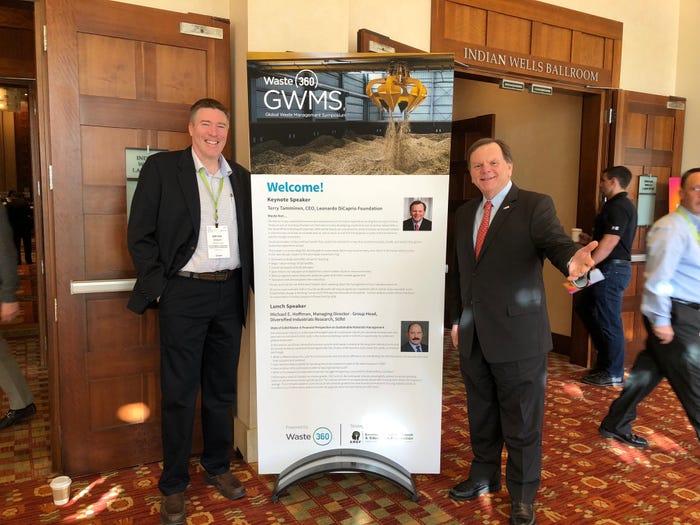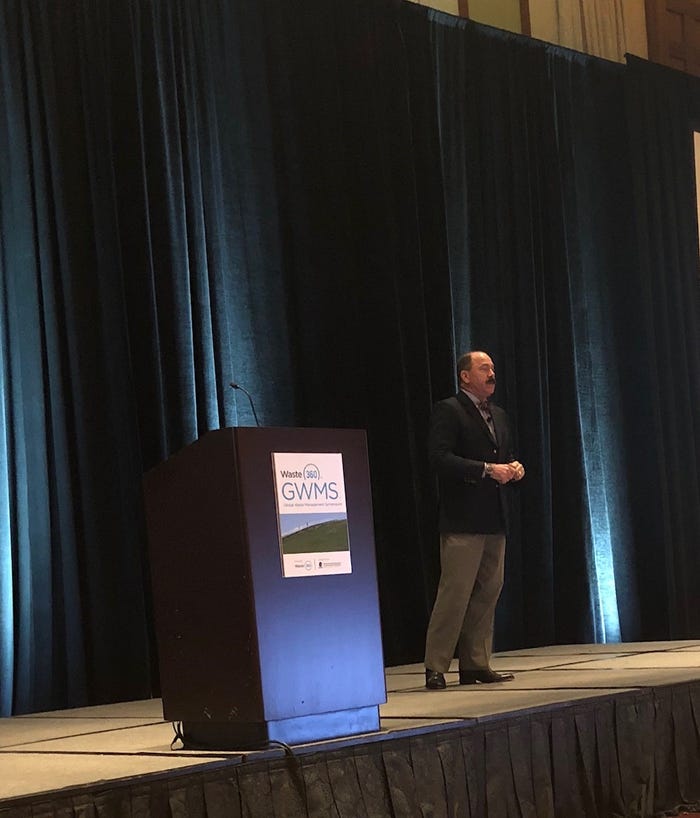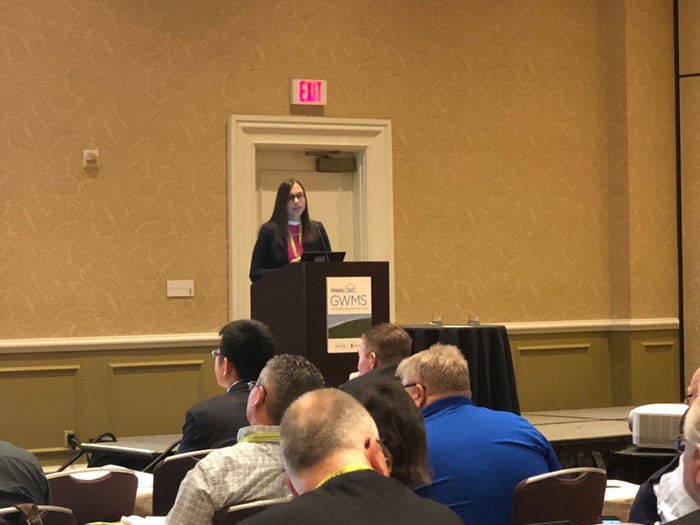Takeaways from Day One at GWMS 2018
The technical conference covered a lot of ground in its first day.

Global Waste Management Symposium (GWMS) 2018, North America's No. 1 technical conference for the presentation of applied and fundamental research and case studies on waste management, began on Monday at the Hyatt Regency Indian Wells Resort & Spa in Indian Wells, Calif.
The conference kicked off with a keynote session featuring Terry Tamminen, CEO of the Leonardo DiCaprio Foundation and co-founder of the Planet Pledge Fund. Following the keynote, attendees took part in various education sessions, which covered topics like leachate characterization, landfill design and structural stability, anaerobic digestion, elevated temperature landfills, coal combustion residuals, landfill emissions, waste management planning and more.
Day one also included a lunch presentation from Stifel Managing Director Michael E. Hoffman, who explained the state of solid waste.
Here are some key takeaways from the first day of GWMS 2018:
Tamminen addressed why the biggest economic opportunity in the history of the planet is figuring out how to finance the transition to a zero waste future.
Tamminen, playing on “Harry Potter and the Chamber of Secrets”, said that the real chamber of secrets is a zero waste campus and that the three keys to unlock a zero waste campus future are policy, finance and technology.
Closing out the keynote, Tamminen stated that our future depends on ending the concept of "waste,” and when it comes to sustainability, you need to invest in the technologies here today.

Hoffman highlighted 10 observations for the next 10 years:
A lot more little brown boxes in the waste stream than anyone could have guessed.
China is not kidding about contamination cutting imports of recycled fiber by one-third.
Internet of Things (IoT) of solid waste—Even in trash, technology will change the relationship with the customer.
Autonomous vehicles (AV) are only used in off-road applications—it’s decades before pickup/delivery AV is a reality.
Alternative fueled collection vehicles (CNG) make up 50 percent of the fleet.
U.S. average landfill tip fees nearly double from current levels—$50/ton goes to $80/ton for municipal solid waste (MSW).
Customers come clean on recycling versus diversion with a renewed commitment to true sustainability driving reuse.
Recycling increases to account for 35 percent to 40 percent of the waste stream, while waste-to-energy makes up 10 percent and landfill makes up the remaining 50 percent to 55 percent.
Solid waste production remains at about 4.40 pounds per person per day.
Organic diversion/recycling is not economical without subsidies—ever.
Hoffman also shared some key points from the recently published Waste360/Stifel survey that establishes a baseline of data to provide insight on the trends underlying the solid waste industry.
When it comes to the tax reform, Hoffman said that industrials will widely benefit from the tax reform, there will be a meaningful bump to baseline FCF, 4Q17 noise will be mostly non-cash for the revaluation of deferred tax assets/liabilities and international profit repatriation could have a negative impact.
Weighing in on China’s new import ban and contamination standard, Hoffman said that China’s contamination “red line” is real, contamination limits will restrict imports indirectly, export prices plummeted from 50 percent to 60 percent in 2017 and have since recovered about half, domestic prices are off the bottom but could decline again, no one knows and will not know what is really going to happen in FY18 until post the Chinese New Year (February 16, 2018), domestic collection and processing of recyclable materials has to change, $3 to $5 per household is not enough to add recycling collection (should be $7 to $8 per household), processing costs are back over $85 a ton and recycling cannot be done repeatedly with the current variability in commodity prices and the high level of contamination at the point of collection.

In the leachate characterization session, Bryan Staley of the Environmental Research & Education Foundation (EREF) highlighted the state of practice of leachate management and treatment in the U.S., Renzun Zhao of Lamar University discussed the characterization of UV quenching substances in waste liquids from ETLFs and its implication, Florentino De la Cruz of North Carolina State University shared the effect of food waste diversion on leachate quality and Stephanie Bolyard of EREF explained a chemical characterization of landfill leachate.
Staley shared that landfill owners are utilizing methods like capping, daily cover, tarps, temporary covers and control berm to divide stormwater or divert runoff, ultimately minimizing leachate.
Staley also discussed preliminary results of EREF's study on leachate. He said that a significant fraction of landfills that collect leachate generate 25,000 gallons or less per day, and that onsite treatment of leachate is 1.4 times higher than POTW without trucking, while discharge to a POTW by trucking is 2.8 times higher than direct discharge
De le Cruz said that food waste affects pH during anaerobic degradation, and protein has the highest ammonia level.
Bolyard explained the environmental implications of leachate organic matter: highly colored, interferes with UV disinfection, leads to disinfection byproducts, resistant to conventional biological treatment and transport heavy metals and hydrophobic organic contaminants. All of these implications are related to LOM characteristics.

In the solid waste data and informatics session, Kim Smith of the State University of New York-Stony Brook talked about solid waste generation and composition and the evolving ton, Jon Powell of Yale University explained how to establish and characterize contemporary landfill quantities and practices in the U.S., Jonathan Krones of Yale University highlighted a triangulation approach for accounting for non-hazardous industrial waste in the U.S. and Bryan Staley and Debra Kantner of EREF explored the impact of methodology and assumptions on MSW estimates.
For up-to-date information throughout the event, follow @Waste360, @WasteExpo and #GWMS18 on Twitter and WasteExpo on Instagram. For more information about GWMS, click here.
About the Author
You May Also Like




.png?width=300&auto=webp&quality=80&disable=upscale)